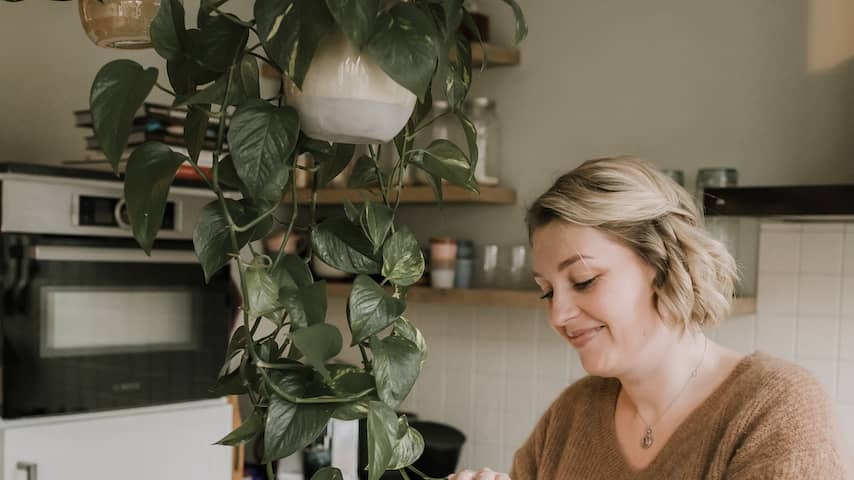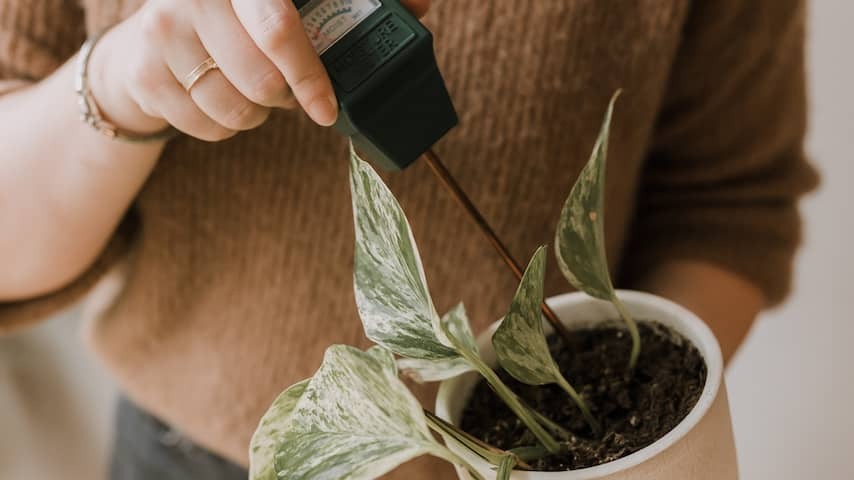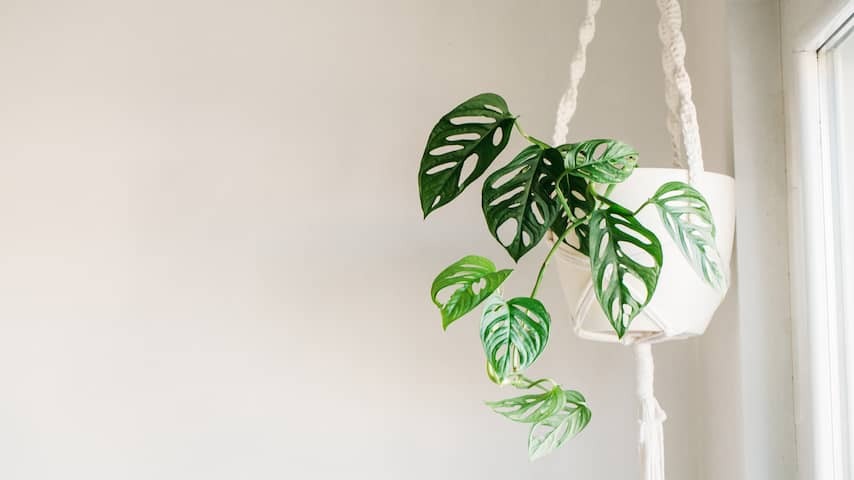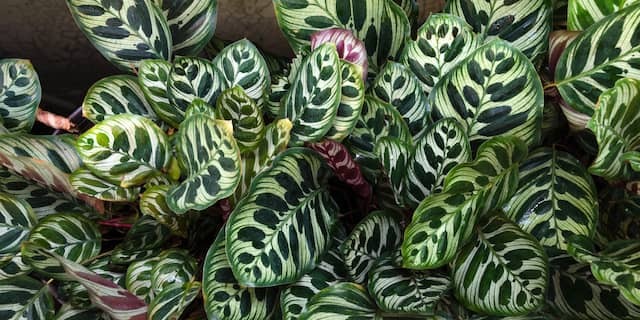
Bringing greenery into your home with a large dragon ivy, a big banana plant, or a cowboy cactus? Two experts share the best tips to keep your plant alive.
Choose the spot first, then the plant
Look at the spot in your room and choose your plant accordingly, says Yvette Smit. With Pucks Planten, she gives workshops and an online course in houseplant care. “For example, take the spot where your Christmas tree stood. Is it facing south? Then place a plant there that can withstand full sun: a jungle-like one such as a banana plant or a bird of paradise plant.”
The east is often a perfect spot for your houseplant. The directions are not easy for everyone, Smit knows, but you often know where the sun rises in your living room. That is the east. And you see it set in the west. Tip: your smartphone often has a compass.
Anyone can take care of plants, but if you are unsure about your green fingers? Then don’t choose a drama queen like the calathea or the curly fern, says Job van Holland, plant doctor at houseplant webshop Plantsome.
A yucca is easy, just like the emerald palm and the monstera. A tillandsia is an air plant that you don’t have to take care of at all.

Keep them clean and fresh
Dust your plants and clean them, advises Smit. This removes pests and prevents plagues. You can then immediately take a good look at your plant and see what it needs.
Now that it’s getting warmer, your plants could use some extra love. Therefore, Van Holland recommends misting your plants three times a week with a plant sprayer. “You can’t mist too much. Don’t forget that all houseplants are tropical, so you can really keep the air humid.” This immediately removes the dust, because dust on the leaves can prevent plants from absorbing light.

Watering and repotting
Purchase a water meter, advises houseplant expert Smit. You stick it in the soil and then you immediately see if it’s time for watering. “That is more effective than a schedule where you water all your plants every Wednesday and Saturday, for example. Walk along your plants with your watering can and water meter, and see what each plant wants.”
Repotting is not often necessary, even with fast-growing plants. “A banana tree can grow beautifully large, but has a small root system and can stay in a small pot for a long time.”
The danger of a pot that is too large is that too much water remains in it after watering, Smit knows. If the roots really break through the pot, you can move to a larger pot. But beware: not now, because it is winter. In the spring, when the growth starts, it is time for this work.
A common mistake is pouring buckets of water on your plant when the leaves turn brown. Plant doctor Van Holland: “You think it’s thirsty, but when the leaves turn brown, the plant has had too much water. Once is not bad. But if a plant consistently gets too much water, the roots will rot.”
Then it’s the end of the story. You can still try to save the situation by cutting away the black, rotten roots and putting the still healthy roots to work, but also for that: not now. In the winter, your houseplant rests.
A terracotta pot absorbs water. Do not use this for your jungle-like plants that want a lot of water, but for example a cactus or succulent.

Using apps
Do you find it difficult to keep up with watering schedules? Then you can also let an app do the green-fingered thinking. “The app from Plantsome sends you notifications when you need to water your plant and gives you tips on the care of each plant. Then it can hardly go wrong.” You give your plant a name, put it in the picture and the app knows exactly what it needs.
The Planta app recognizes your plant if you don’t know it so well yourself. In addition to tips, Plantigo also offers the possibility to exchange cuttings with neighbors.
Fertilizing
Banana water, coffee grounds and eggshells are natural foods for plants, but they don’t give a huge boost. Buy a good organic plant food, says Smit, and give food when they start to grow, so in the spring.
Potting soil with food is nice for your plant, but Smit prefers to use worm compost, and mixes it with soil. Bags of potting soil at the garden center contain peat soil – which is extracted from our soil and that harms the peat areas.
Plagues and pests
Spider mites, mealybugs, thrips, fungus gnats: these are pests that make your houseplant sick. Do you have a plant with pests and do you want to save it? Then quickly put the plant in quarantine so that they do not go to your other plants.
You can use natural predators, such as predatory mites. These can be ordered online and eat the plague pests. They can also be used preventively. Smit: “They don’t live long, but they do their job well. Put all your plants in groups together and let the mites walk around and get to work.”